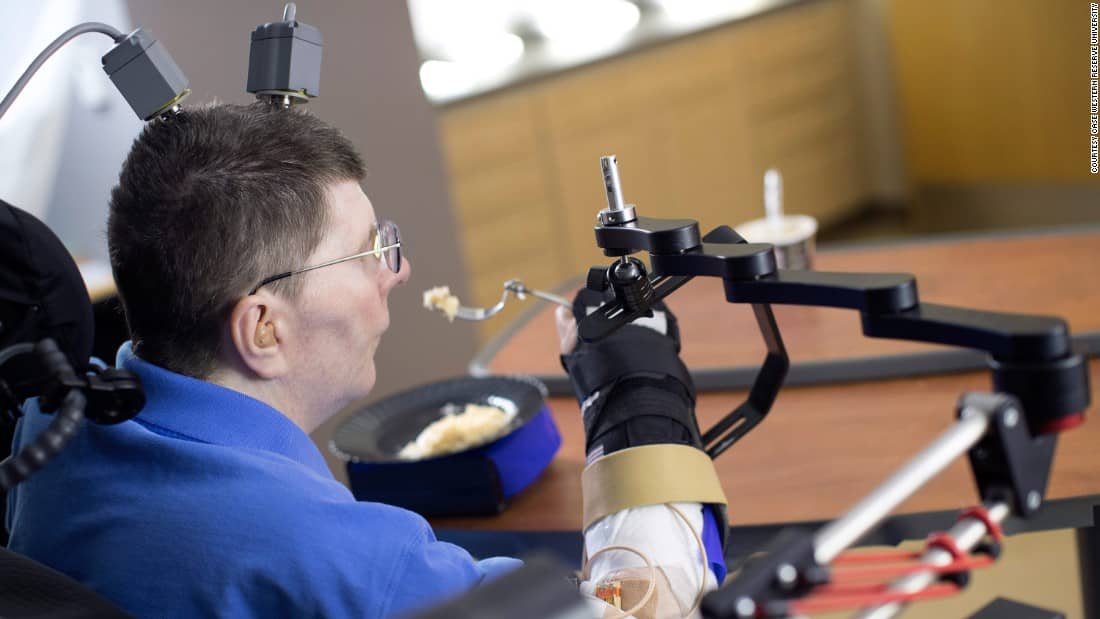An experimental technology called neuroprosthetics from Case Western Reserve University in Cleveland, Ohio allowed a paralyzed man to move his arm and perform daily tasks all by himself.
Paralysis is devastating. It has driven some people to the edge of suicide, but technology continues to help. Stephen Hawking is the most famous example of people that have been helped by science and technology to live a reasonable life. Intel developed a computer device to allow Hawking speak his mind. Researchers at the Case Western University are working on the neuroprosthetics technology that takes another step further to provide paralyzed people with an ability to move.
The technology was successfully tested on the 53-year-old Bill Kochevar who was left completely paralyzed from the neck down after a bike accident that injured his spinal cord. Eight years after his accident, neuroprosthetics has allowed him to gain control of his arm and use it through his thoughts. He managed to drink a coffee and eat a pretzel on his own, and he talked about the tech saying, “I thought about moving my arm, and it did. I could move it in and out, up and down. We actually did some experiments in which I closed my eyes while reaching and I was able to do it.”
Functional electrical stimulation (FES) in paralyzed patients coordinates electrical stimulation of muscles and nerves to bring back movements. Itntracortical brain-computer interface (iBCI) is implanted in patients, allowing them to process the commands with their body’s cortical signals.
Two intracortical microelectrode arrays were implanted around Kochevar’s hand area of motor cortex. A few months later, 36 more electrodes were implanted through his skin in his entire right arm. The electrodes provided electrical stimulants to the hand, elbow and shoulder muscles. He also used a motorized mobile arm to aid with gravity and provide movement.
The research provided the first literature report discussing the successful use of a combination of implanted FES and iBCI neuroprosthesis allowing paralyzed patients to regain enough control to reach, grasp, and pick up objects.
Steve Perlmutter from the University of Washington commented, “This treatment is not nearly ready for use outside the lab. The movements were rough and slow and required continuous visual feedback, as is the case for most available brain–machine interfaces, and had restricted range due to the use of a motorized device to assist shoulder movements … Thus, the study is a proof-of-principle demonstration of what is possible, rather than a fundamental advance in neuroprosthetic concepts or technology. But it is an exciting demonstration nonetheless, and the future of motor neuroprosthetics to overcome paralysis is brighter.”
The researchers are working to make the system smaller to that it can be implanted in the body even to allow leg movements. While the technology is still in its infancy, it gives hope to severely paralyzed patients that they will someday be able to do daily tasks on their own.


